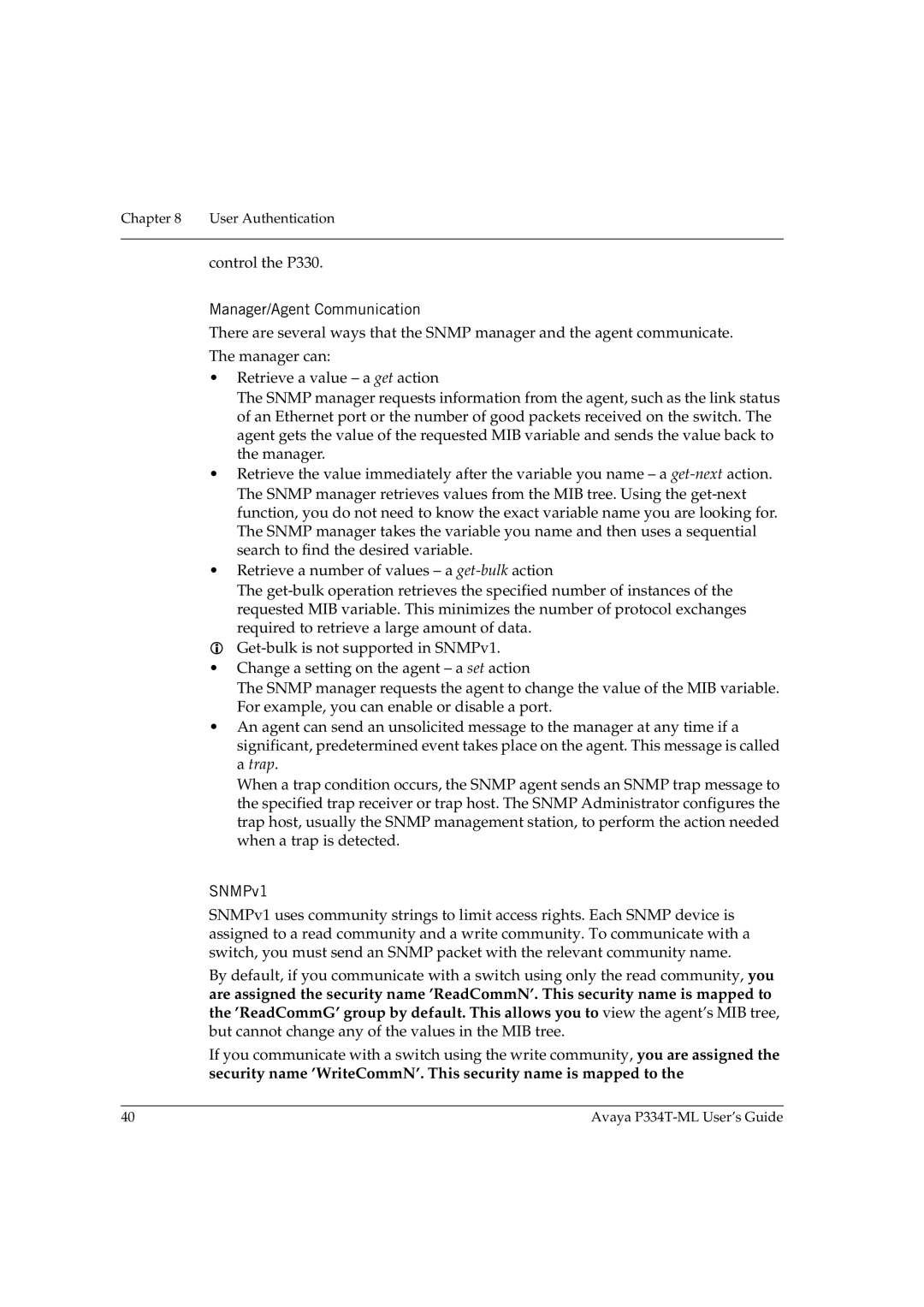
Chapter 8 User Authentication
control the P330.
Manager/Agent Communication
There are several ways that the SNMP manager and the agent communicate. The manager can:
•Retrieve a value – a get action
The SNMP manager requests information from the agent, such as the link status of an Ethernet port or the number of good packets received on the switch. The agent gets the value of the requested MIB variable and sends the value back to the manager.
•Retrieve the value immediately after the variable you name – a
•Retrieve a number of values – a
The
•Change a setting on the agent – a set action
The SNMP manager requests the agent to change the value of the MIB variable. For example, you can enable or disable a port.
•An agent can send an unsolicited message to the manager at any time if a significant, predetermined event takes place on the agent. This message is called a trap.
When a trap condition occurs, the SNMP agent sends an SNMP trap message to the specified trap receiver or trap host. The SNMP Administrator configures the trap host, usually the SNMP management station, to perform the action needed when a trap is detected.
SNMPv1
SNMPv1 uses community strings to limit access rights. Each SNMP device is assigned to a read community and a write community. To communicate with a switch, you must send an SNMP packet with the relevant community name.
By default, if you communicate with a switch using only the read community, you are assigned the security name ’ReadCommN’. This security name is mapped to the ’ReadCommG’ group by default. This allows you to view the agent’s MIB tree, but cannot change any of the values in the MIB tree.
If you communicate with a switch using the write community, you are assigned the security name ’WriteCommN’. This security name is mapped to the
40 | Avaya |
